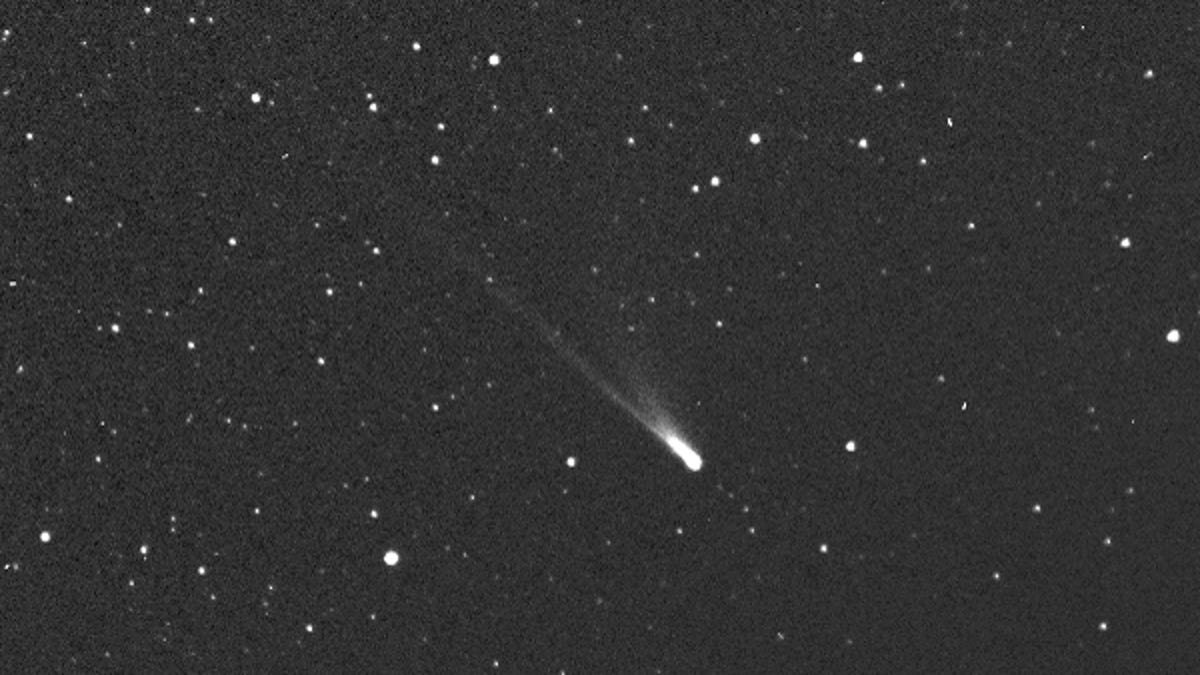
Comet 96P/Machholz as seen in 2007.
NASA
Right before the bright green Comet C/2022 E3 (ZTF) makes its closest pass by Earth in 50,000 years, a bigger and stranger comet buzzed by the sun Tuesday in an unusual encounter.
Comet 96P has now passed perihelion, and is looking great! 😍
Follow along on the @MissionSoho website: https://t.co/1iYjLF4Kny (but note my many recent caveats about how the “pretty picture” rate has been slowed in favor of science data) pic.twitter.com/l00r7LR0AH
— Karl Battams (@SungrazerComets) January 31, 2023
Most so-called “sun grazer” comets are about the size of a house and end up getting vaporized by their daredevil dive around our star, but Comet 96P/Machholz is more like the size of a town at 6 kilometers (3.7 miles) across, and at least one astronomer suggests it might also be “alien.”
Not necessarily alien as in created by extraterrestrial intelligence, but rather an interstellar comet alien to our own solar system. If that’s the case, it could be very different from all other known comets, and all bets are off on how it will react to what looks to be a super-close encounter with the sun.
“96P is one of the most compositionally and behaviorally weird comets in the solar system,” Karl Battams, who directs the US Naval Research Laboratory’s Sungrazer Project, said in a Jan. 29 tweet.
Battams has tracked 96P’s progress toward the sun using SOHO, NASA’s solar observatory, providing some pretty striking visuals. On Tuesday, he retweeted a 96P fan’s time-lapse video.
So @SungrazerComets pointed out Comet 96P on SOHO, so I could not resist the need for a time-lapse. https://t.co/x3ZE1lPT4h pic.twitter.com/lUGsI9LJtC
— Ron Murphy (@isixtyfive) January 31, 2023
Most sun-grazing comets don’t survive a close pass by the sun, but 96P was apparently big enough to make it. That said, Battams had tracked what might be fragments that broke off the nucleus in the days before the moment of closest approach, or perihelion, which ended up happening on Tuesday.
The comet’s strange trajectory that takes it so close to the sun and its apparently low levels of carbon are just a few of the reasons researchers suggest it might be from beyond the solar system. Only in recent years have astronomers documented the presence of interstellar comets visiting our neighborhood, and at least one controversial astronomer has suggested that one interstellar visitor may have been artificial.
Battams tweeted that his project has run a special observing program on 96P to gather as much data as possible.
“We’re trying to science the heck out of it.”
Update, Jan. 31: The perihelion date changed from the original version of the story.
